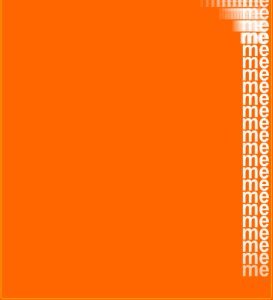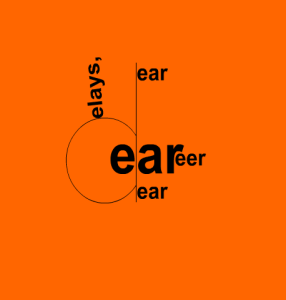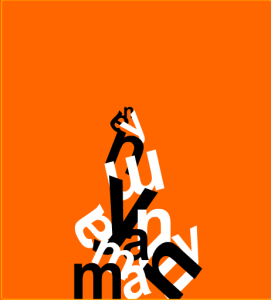After hearing Professor Galey talk about the digital experiments over at Coach House Books, I decided to poke around on their website to see if any digital versions were open to the public. There are a great number of digital titles which can be accessed free of charge (http://chbooks.com/online), but the one I will discuss here is an animated poem called The Dreamlife of Letters, by Brian Stefan Kims (http://archives.chbooks.com/online_books/dreamlife_of_letters/).
Based on the author’s introduction to the poem, he wanted to write something that was different from the “antique “concrete” mode” and he explains that it is not interactive, rather “much more like a short film than an interactive piece, and there didn’t seem any natural place to let the viewer in that way.” It runs about 11 minutes in total, and is composed using the words from another version of the poem, rearranged to be listed in alphabetical order.
It’s difficult to explain how the animation plays out, as it is so different from page to page. (My use of the word page here could be contested, as the poem plays out on a single window screen, but I am counting each time the screen is shown blank and filled up again as a separate “page” for the purposes of this discussion.) Sometimes the words come in from left to right, sometimes from top to bottom or vice versa. Other times words start in the middle of the page and work outwards, and still others words are pushed off to one side or appear diagonally. In any case, the conventional text block of a page which reads from left to right and top to bottom is challenged. So too is the concept of the margin, as evidenced by the page in which “me” is repeated, column-style, down the far right side.




While there is a good amount of white space (or orange space, in this case) in each “page” or frame, the whole page is used over the course of the poem. No holds are barred in terms of where letters can appear, or how they can appear. Because of this, I think Brian Stefan Kims succeeded in innovating the page, and indeed innovating our notions of how a digital text can be presented to a reader or “viewer.” Since the poem plays out as a video, there is no allowance for different reading paces, or breaks, as a matter of fact, since there is no speed option or “pause” button. The reader is left at the mercy of the author, as opposed to the other way around.

This exploration of a page that in some ways feigns interactivity for the reader reminded me of the (very interactive) text I looked at this week, because it seems to function in almost the opposite way. When you discuss that “there is no allowance for different reading paces, or breaks, as a matter of fact, since there is no speed option or “pause” button. The reader is left at the mercy of the author, as opposed to the other way around,” it served to further blur the boundaries between animation and book, just as the text I looked at blurred the boundaries between game and book. The function of the page of my text contains all of the elements of the reader having control via its handy navigational tool of tapping through the pages/authors. This creates a great deal of movement in the text, and I thought it was interesting that yours attempts to create a sense of motion as part of the text but in a completely passive way. The major way it seems to effect the text is through its temporality – the page exists within a predetermined time frame – defining the page as something that has time built into its architecture.
Hi Sam,
Thanks for your comment. Your interactive texts discussion called to mind those old “Choose Your Own Adventure” books I used to get from the library as a child. I realize that your example is different insofar as it is a digital version which could not exist on paper, but I couldn’t help but wonder at how these paper books function. Essentially, the reader is a sort of mediator in the creation of hyperlinks, which occurs when they follow the instructions “Flip to page xx”. By skipping over portions of the work, as instructed, the reader is navigating the text in a way that is very unconventional for a chronological narrative. Do you think this way of organizing a text laid any of the groundwork for something like the digital work you were discussing?